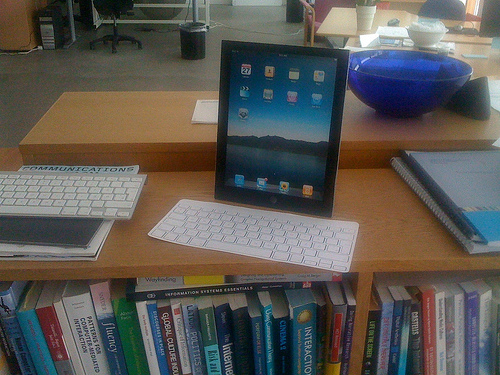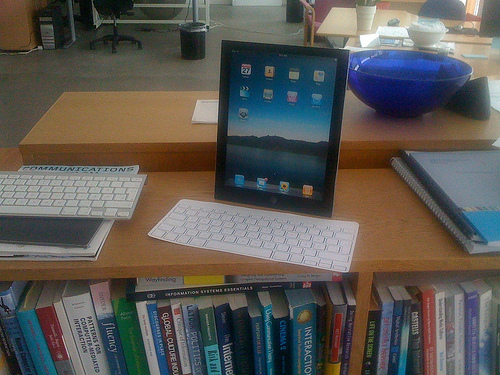Smartphone technology and tablet computer interfaces are proving surprisingly useful for health care. The portability and ease of use of tablet technology means that they provide unprecedented opportunities for medical personnel to communicate with their patients. Instant information opportunities mean that the patient will be able to be fully informed about their medication and therefore much less at risk for pharmaceutical interactions. Monitoring opportunities from the computer are manifold, both in constant and voluntary form. Constant monitoring means that there are built-in sensors installed in the tablet that collect data on the patient without their participation Voluntary monitoring means that the user checks in and lets the doctor know how they are doing. This is very effective when one is using the tablet for other things, so it is easy and convenient to make contact. The rewards and pleasures ingrained into tablets encourage people and make taking care of their health more fun. As the consumer participates more and more in their own health care decisions patient risk is sharply curtailed.

FDA Regulation
These health applications are so effective that the FDA is mulling guidelines to apply to them that are as stringent as the ones used on pacemakers or heart stents. This is reasonable and appropriate, because health apps will have a substantial effect on the public’s health. Without oversight it would be possible for people to market apps that make irresponsible health claims, such pretending to find tumors from photo analysis. Calorie calculators and exercise regimen applications are more or less harmless, but when the apps start to make specific health claims they need to be regulated by the FDA. It is essential for the protection of the American public.
Accurate device reporting should be mandatory when it comes to things like home glucose monitoring. When a device claims to be able to take over for a medical health professional in something as critical as monitoring glucose levels, then it must be able to do it. Anything less will lead to injury, death, and a lack of trust in smartphone health programs among the public. If this important regulatory step is taken, then the possibilities for home health and patient risk reduction are limitless.
Rapid, Efficient and Convenient Communication
For the first time in human history, instant two-way communication is possible with a doctor at any time and from any place. Tablets and smartphones are more than sophisticated enough to carry out diagnostic and monitoring functions, so long as those apps and utilities are well designed and tested by competent corporations. Simple tests can be carried out from home, sparing patients the need to go in to the hospital and use the valuable time of trained healthcare providers. Important daily regulation and monitoring can be done flawlessly with the proper apps, and “missed appointments” are reduced to zero when the diagnostic device can be carried in the pocket. Preventative medication will also be revolutionized. The convenience of the smartphone means that people are in constant communication with it. Helpful bits of health advice can be dispensed painlessly throughout the day. Diets will be easier to keep with the friendly presence of a dieting application, which means fewer heart attacks and cases of adult-onset diabetes down the road. Exercise schedules will be kept with more discipline and optimal heart rates will be achieved at more appropriate metabolic times. The improving accuracy means that negative outcomes will be that much rarer. People will eat fractionally better, exercise fractionally more, and take care of their health just a little bit better. No one single application will bring on great effects, but the cumulative changes wrought by this advanced health monitoring and reporting technology will be great. Patient risk will be greatly reduced by these global effects.
Featured images:
- License: Creative Commons image source
Robin Gardner is a medical data specialist and guest author at Best Colleges Online, where she contributed to the guide to the Top 10 Best Online Master’s in Health Informatics Degree Programs.

